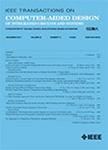版权所有:内蒙古大学图书馆 技术提供:维普资讯• 智图
内蒙古自治区呼和浩特市赛罕区大学西街235号 邮编: 010021

作者机构:The Department of Electronic and Computer Engineering The Hong Kong University of Science and Technology Hong Kong
出 版 物:《IEEE Transactions on Computer-Aided Design of Integrated Circuits and Systems》 (IEEE Trans Comput Aided Des Integr Circuits Syst)
年 卷 期:2024年第44卷第7期
页 面:2751-2764页
核心收录:
基 金:National Natural Science Foundation of China (NSFC) ACCESS—AI Chip Center for Emerging Smart Systems, sponsored by InnoHK Funding, Hong Kong, SAR
主 题:Analytical models Accuracy Training data Data models Design methodology Fluctuations Training Timing Microprocessors Logic gates
摘 要:Power efficiency is a critical design objective in modern microprocessor design. To evaluate the impact of architectural-level design decisions, an accurate yet efficient architecture-level power model is desired. However, widely adopted analytical power models like McPAT and Wattch have been criticized for their unreliable accuracy, while machine learning (ML) methods like McPAT-Calib rely on sufficient known designs for training and perform poorly when available designs are limited, which is the case in realistic scenarios. In this work, we propose PANDA, an innovative architecture-level solution that combines the advantages of analytical and ML power models. It achieves unprecedented high accuracy on unknown new designs even when there are very limited designs for training. Besides being an excellent average power model, We also extend PANDA to support the time-based power trace prediction, which can enable the analysis of peak power, power fluctuations, and voltage fluctuation. This is highly challenging at the architecture level. Other qualities such as area, performance, and energy accurately can also be supported. In addition to single design quality, PANDA can model the trade-offs among different design qualities such as the trade-off between power and timing by predicting the Pareto-optimal curve. Finally, PANDA can further support power prediction for unknown new technology nodes. Our experiment shows that, for average power prediction, our method can achieve high accuracy with a correlation coefficient R of 0.99 and mean absolute percentage error (MAPE) of 7.91% even when only one configuration is known, outperforming McPAT-Calib which has R of -0.24 and MAPE of 35.96%. For time-based power trace prediction, our method can achieve a low MAPE of 4.34%, outperforming the state-of-the-art method Powertrain which has a MAPE of 53.8%. © 1982-2012 IEEE.